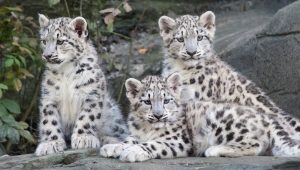
Photo: himachalwatcher.com
The snow leopard is an important species and a national symbol for many people in the Himalayan region. But these animals have been in danger of extinction for many years.
One reason for this is that snow leopards are shy and solitary, preferring remote areas above an altitude of 3,200metres. They are not able to adapt to a changed environment and are therefore not found in villages. The 400 to 700 Indian snow leopards are mainly living in the Western Himalayas of Ladakh and Himachal Pradesh.
Previous efforts to protect the snow leopard have apparently been successful. The International Union for Conservation of Nature(IUCN)recently changed the status of snow leopards from “endangered” to “vulnerable”. The species remains threatened but according to the IUCN the situation is getting better.
The Snow Leopard Trust (SLT) opposes this view, saying that only 2% of the animal’s range has been analysed – mostly areas which are known to be densely inhabited by snow leopards.The SLT, therefore, campaigns to reset the status to “endangered” and obtain a guarantee from every country to keep up conservation efforts.
Unaffected by the recent change, 12 countries continue to work together in the Global Snow Leopard and Ecosystem Programme. This initiative aims to offer wide-ranging protection and to set up “secured landscapes”.
But it is just as important to work at a regional level – for example with Ladakhi villagers who are affected by snow leopard attacks on their animals.The SLC-IT (Snow Leopard Conservancy – India Trust) has changed the attitude of rural communities using simple measures, such as strengthening the roofs of shelters, which have reduced attacks by up to 94%.
Through setting up Homestays, SLC-IT is drawing tourists to these remote areas and is raising further awareness. 10% of the fees paid to the owner are collected and go towards support measures which include insurance against livestock depredation. Thereby, snow leopards, tourists and villagers have all benefitted.
There is hope that with further conservation efforts the future of these animals may be positive and that the snow leopard might thrive in harmony with people all the way from Tibet to Himachal Pradesh.




 Print
Print Email
Email